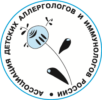REVIEW
Pollen allergy and pollen sensitization: a new look at an old subject
N.B. Migachevа
Abstract
Relevance. Allergic diseases associated with hypersensitivity to pollen allergens (pollinosis) are an urgent medical and socio-economic problem due to widespread increase in prevalence, a variety of clinical manifestations and a negative impact on the quality of life. Understanding the mechanisms underlying the initiation of sensitization to plant-derived airborne allergens can become the basis for development innovative strategies for the treatment and prevention of hay fever.
The aim of the review is to analyze and systematize the currently available data on the mechanisms of the initiation of pollen sensitization and the realization of allergy to pollen allergens.
ORIGINAL ARTICLE
Evaluation of the effectiveness of subcutaneous pollen weed polen allergens
L.Yu. Barycheva, L.V. Dushina, S.S. Masalskiy
Abstract
Background. In European countries, the prevalence of pollen sensitization reaches 30–40%. In Russia pollen allergy ranges from 12,7 to 38%. In the southern regions of Russia, the main one is ragweed and weed pollen. The efficacy of the subcutaneous medicinal ragweed allergen has not previously been evaluated using modern symptom scales.
Methods. Open-label, single-center, placebo-uncontrolled study of 60 patients aged 16–55 years with allergic rhinitis in combination with bronchial asthma and without it. A 2-preseason course of AIT with a subcutaneous allergen of Ambrosia was used for patients with monosensitization and an allergen Ambrosia + Artemisia (for oligosensitized patients) and Ambrosia + a mix of pollen of causal allergen for polysensitized patients. Treatment started 4 months before and stopped 2–4 weeks before the beginning of pollination. The RTSS (the rhinoconjunctivitis total symptom score) scale was used to assess the symptoms, and the DMS (Daily medical score) was used to estimate of medical treatment.
Results. After 1-st season of treatment, there was a rapid decrease in the RTSS to 5,0 [4,0; 9,0] compared to the initial values of 13 [10, 15] points. By the second year, the decline in RTSS amounted to 4,5 [3,0; 4,5] points (p <0,001), the total effect size by second course was 0,96 (strong effect of the intervention). DMS (before treatment) was 2,0 [2,0; 2,0] points, after the first and second courses — 1,0 [1,0; 2,0] points (p=0,002), with a moderate effect size of 0,67 after the first year; by the second year, the effect size is 0,75 versus baseline (p <0,01).
Conclusion. Monotherapy with a subcutaneous ragweed allergen or its combination with other allergens show high effectiveness, starting from the first course of therapy. In the second year, the improvement continues, but the dynamics decreases. The study demonstrated a strong size of the effect of medical intervention, which cannot be explained by the placebo effect.
Features of clinical course and skin lesions associated with new coronavirus infection in children
I.A. Plotnikova, V.L. Zelentsova, I.G. Lavrik, A.A. Egorov, S.A. Nakhratova
Abstract
This article discusses the features of skin lesions and the clinical course of a new coronavirus infection in children. Among the extrapulmonary signs associated with COVID-19, dermatologic manifestations have increasingly appeared in the past few months. The aim of the study was to correlate available data in the literature on variants of dermatological manifestations of COVID-19 in children with clinical examples of skin lesions associated with this infection in patients seen by a specialized dermatologist. We used PubMed and Cyberleninka search engines for the period 2020–2021 Systematized variants of dermatological syndromes in children who had undergone COVID-19 described in reviews of materials by domestic and foreign researchers. The authors analyzed the primary medical records and photographic archives of children admitted to the outpatient clinic of a dermatologist at Yekaterinburg municipal clinical hospital No. 9 for 1 month after the established family contact with a new case of coronavirus infection. Analysis of scientific literature data showed that SARS-CoV-2 virus-associated skin lesions in children were more frequent in the mild course of infection, presumably with the implementation of an immunocomplex mechanism of vascular and epithelial damage. The pronounced vascular damage is a distinctive feature of COVID-19-related exanthemas, especially when localized on the fingers of the lower extremities. This article presents 5 clinical cases of children with various forms of acute dermatoses: urticaria, frostbite-like exanthema of the fingers, onychodystrophy, alopecia, and generalized pustular psoriasis of Zumbush. Only three children had laboratory confirmation of SARS-CoV-2 infection.
COMMUNICATIONS AND CORRESPONDENCE
Clinicо-anamnestic characteristics of children with atopic dermatitis
R.M. Fayzullina, Z.A. Shangareeva, A.V. Sannikova, A.F. Mananova, L.M. Kabirova, A.R. Idrisova
The level of specific IgE and patterns of sensitization to the components of the house dust mite allergen Der p 1 and Der p 2 in children with bronchial asthma
R.N. Khokha, N.S. Paramonova, L.B. Zavodnik

